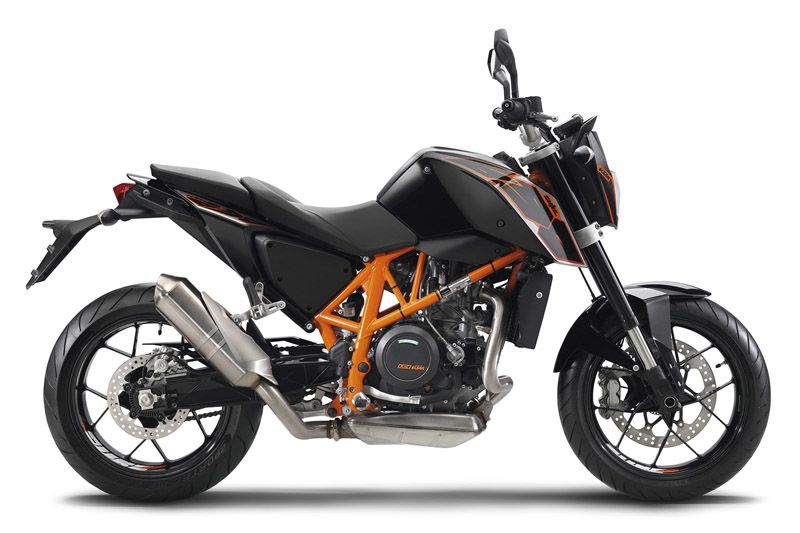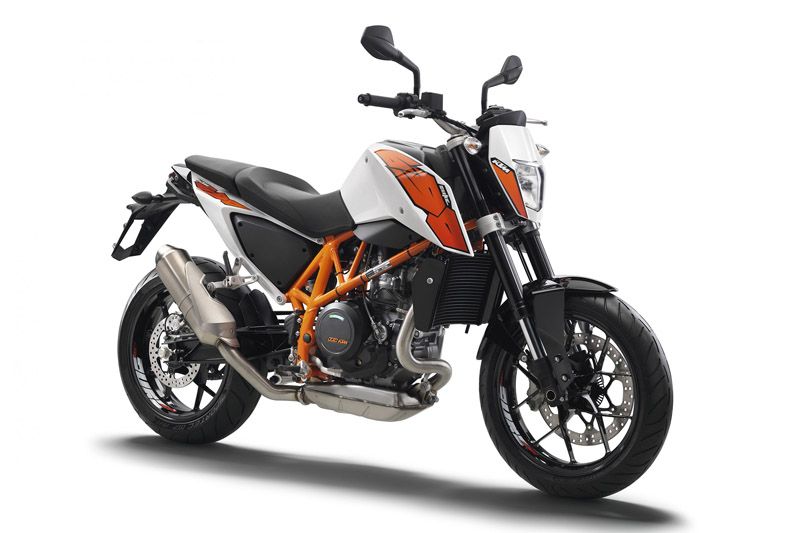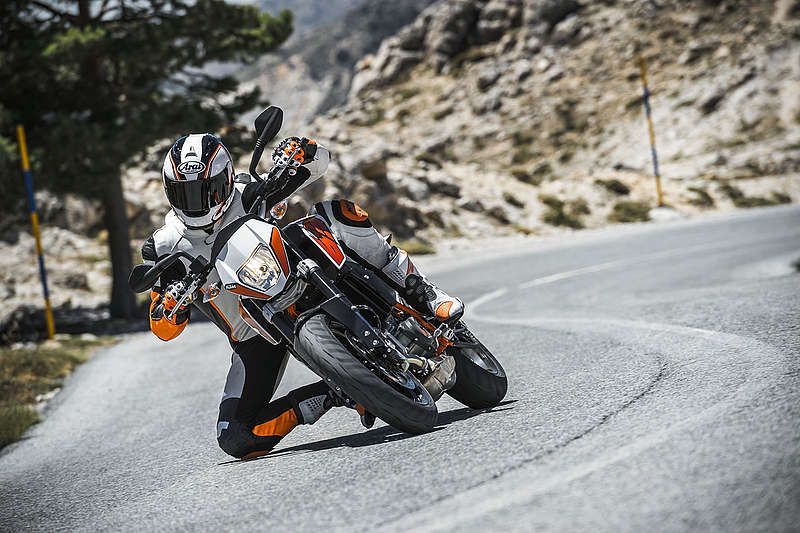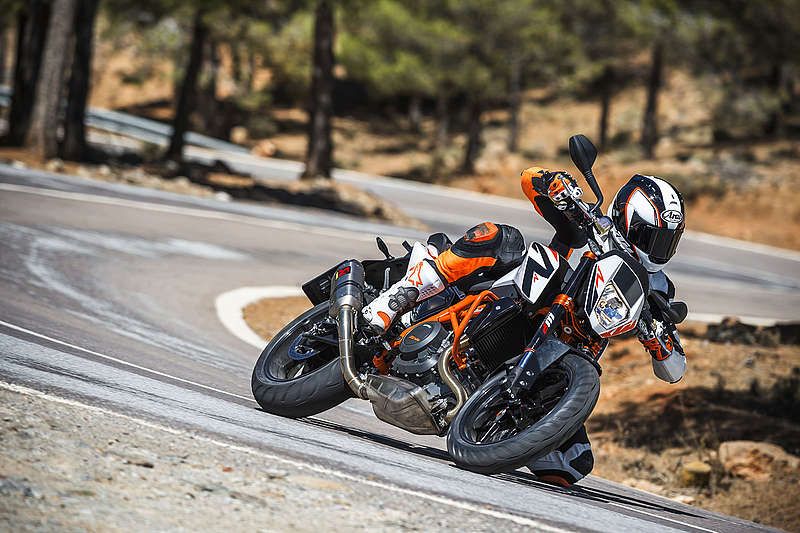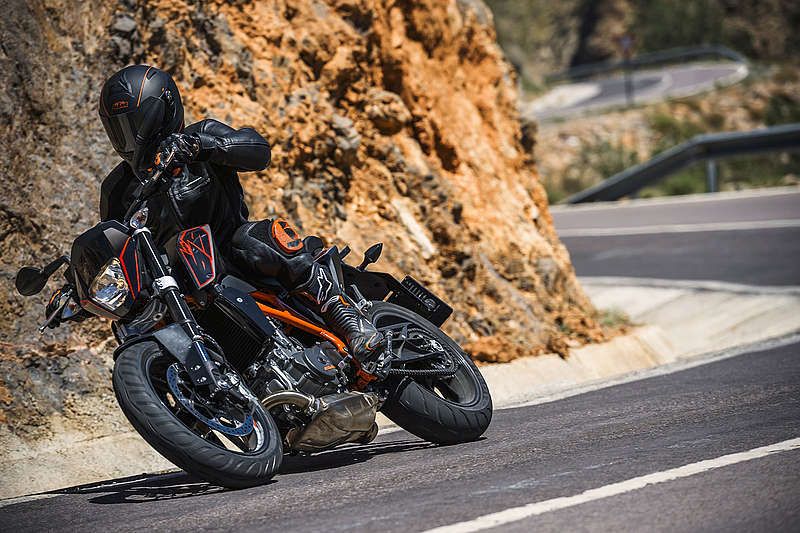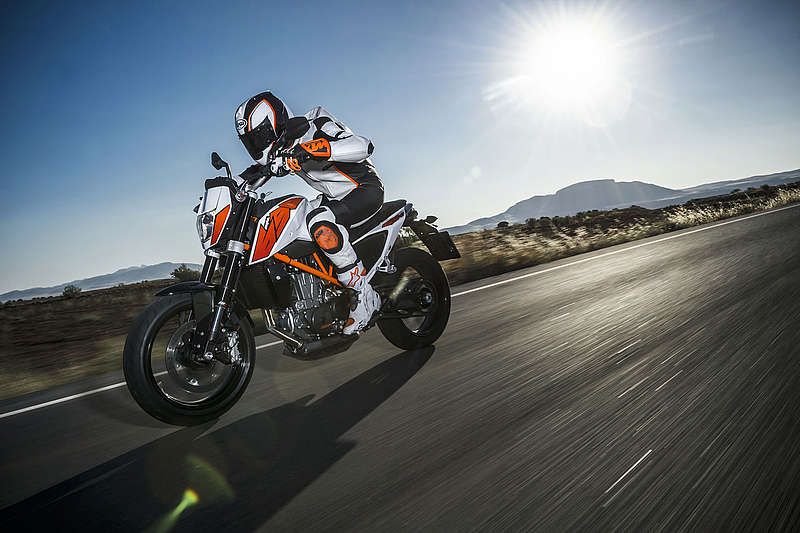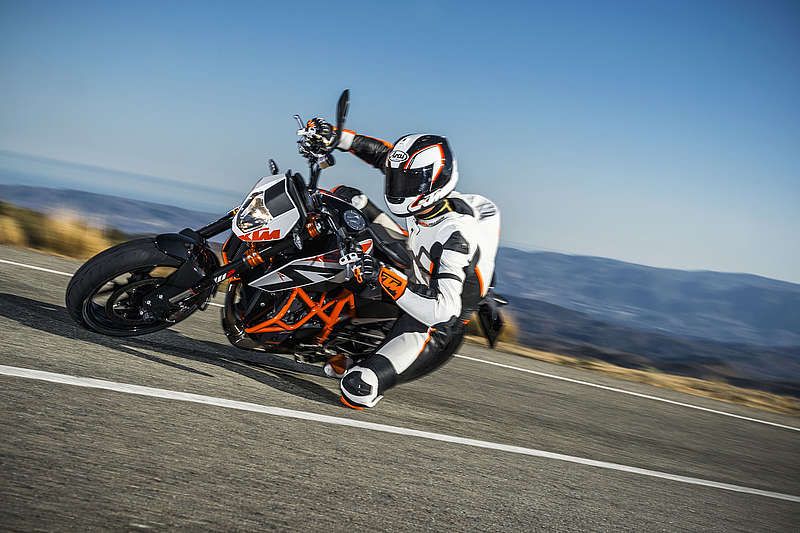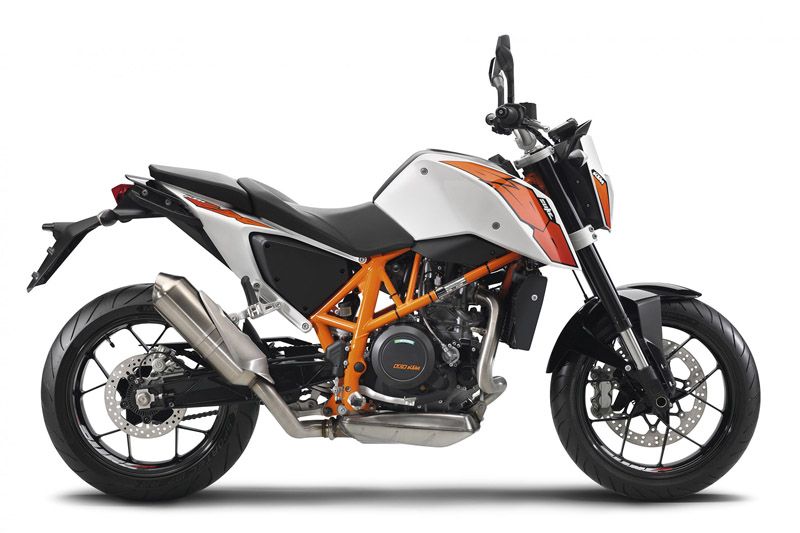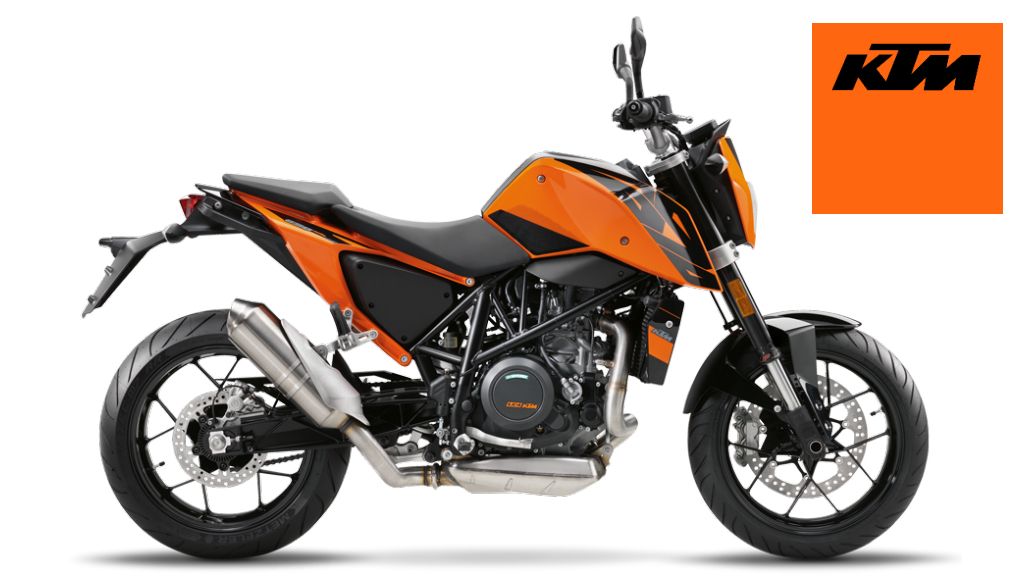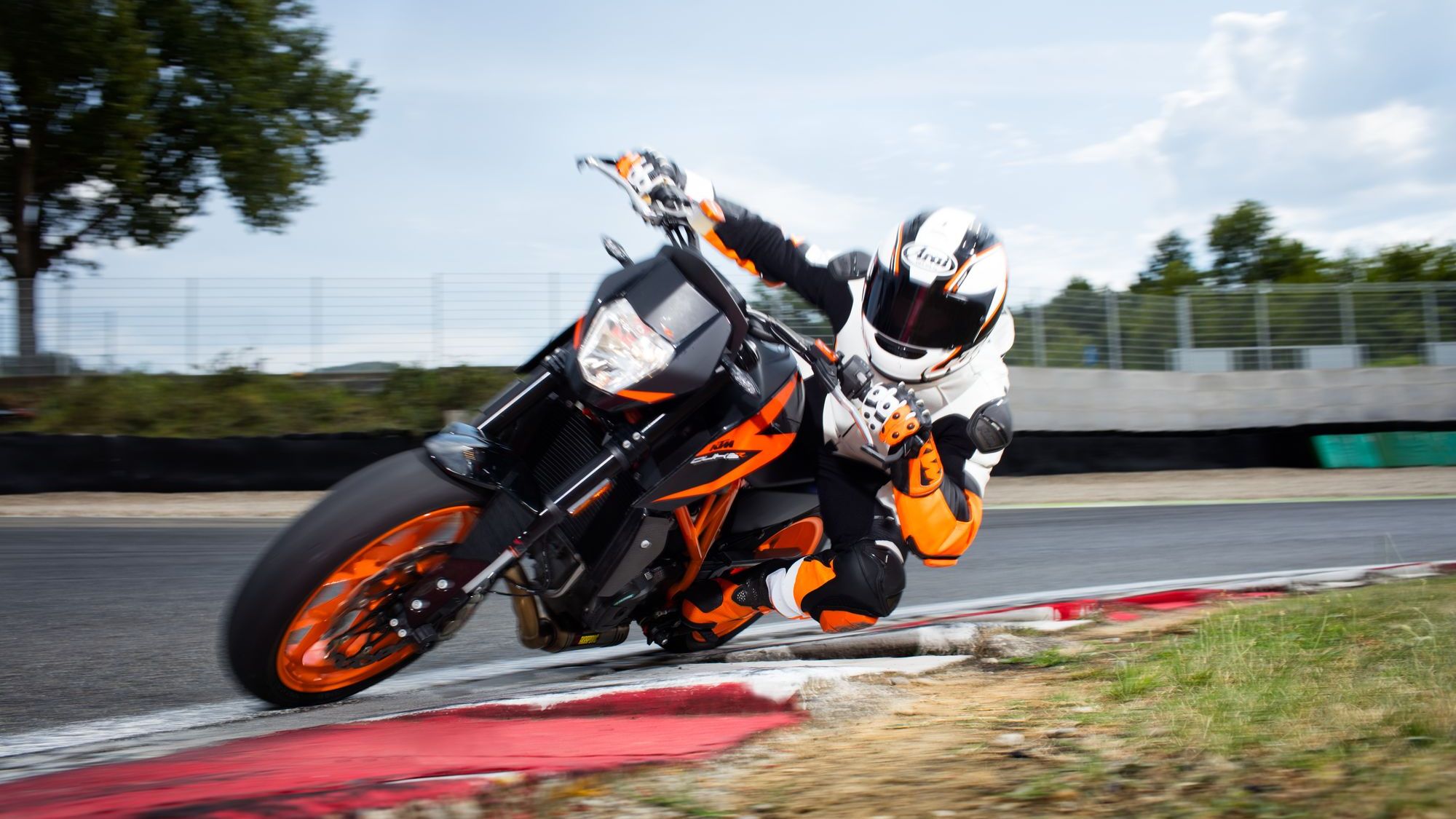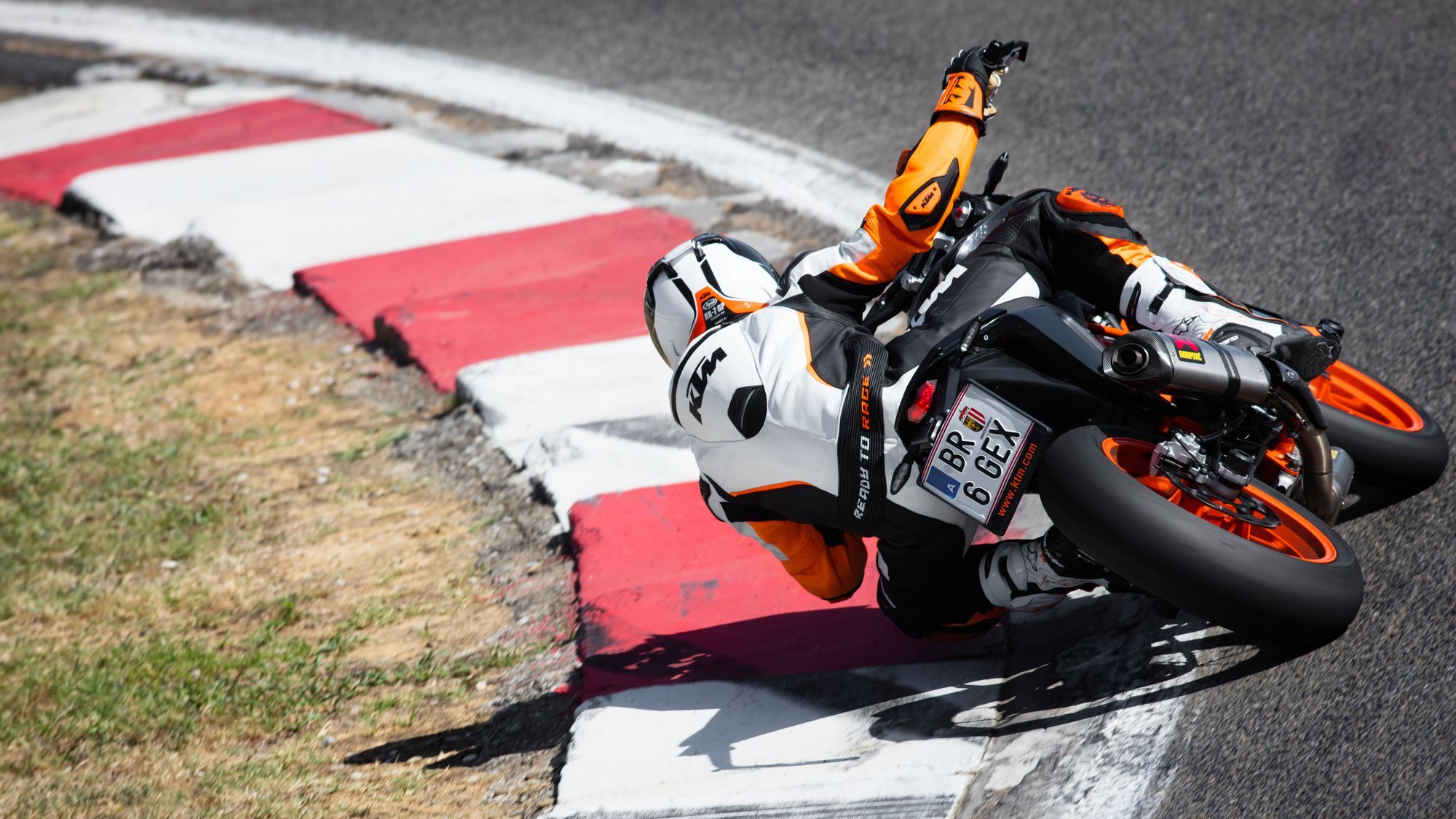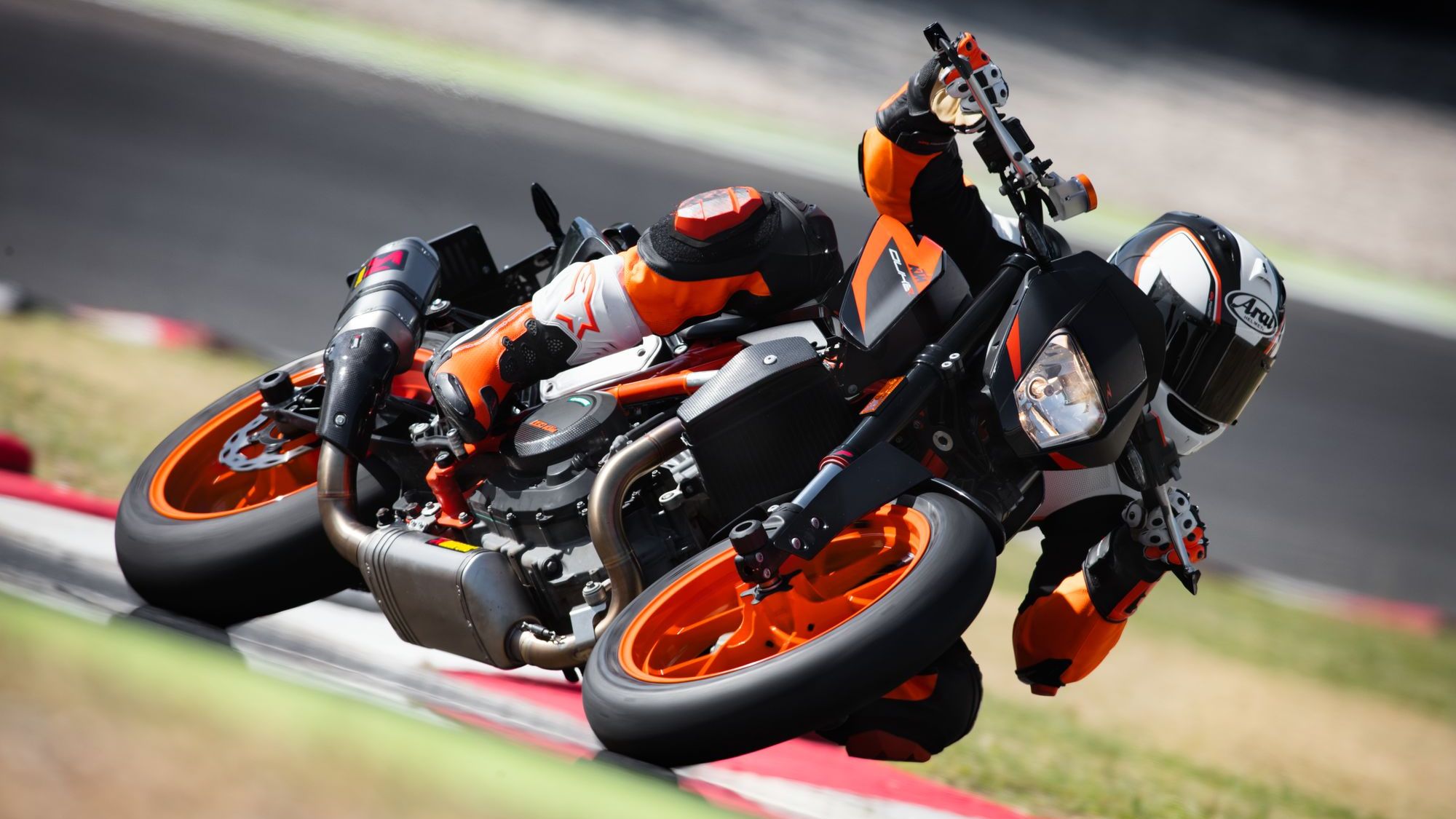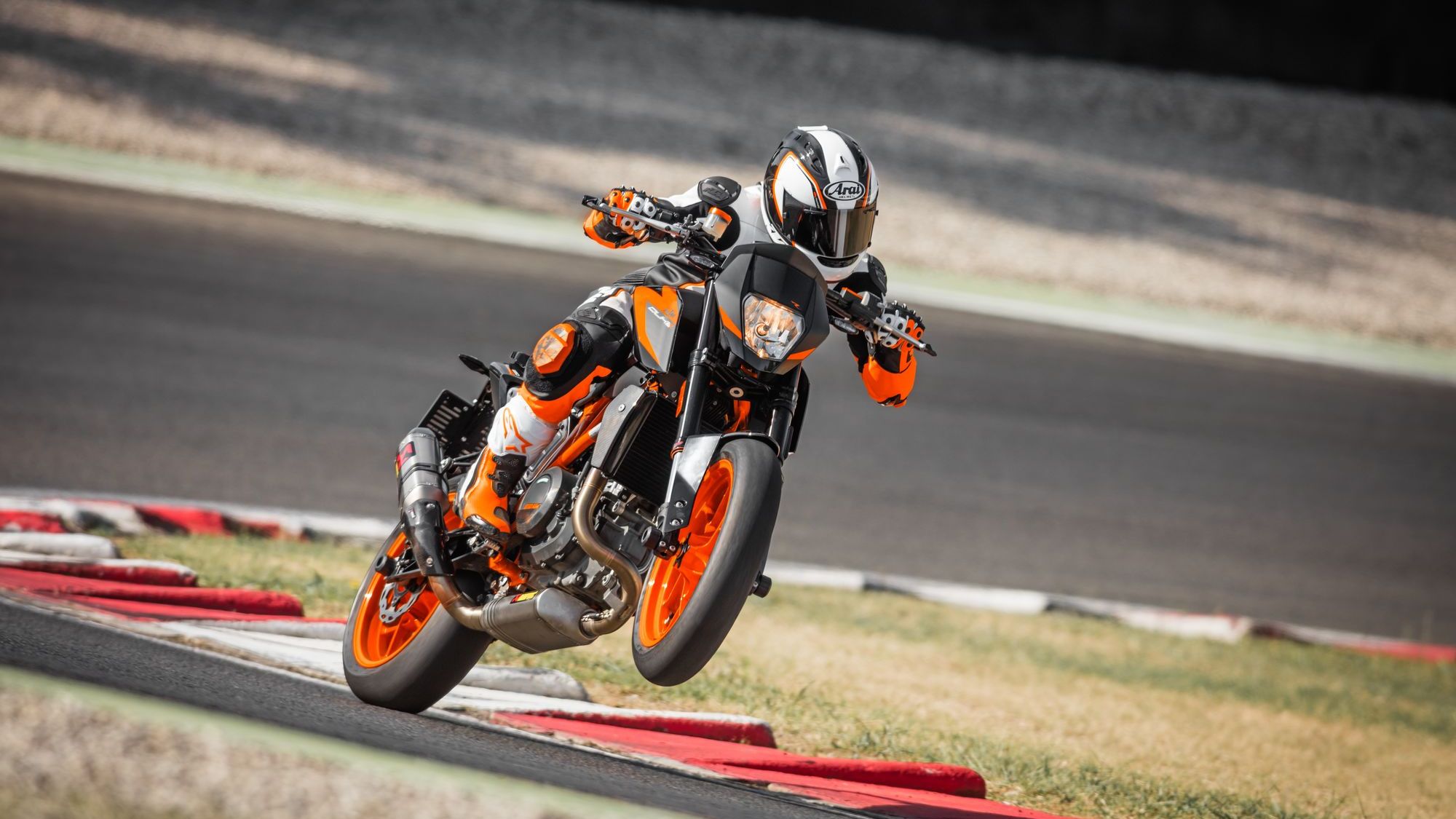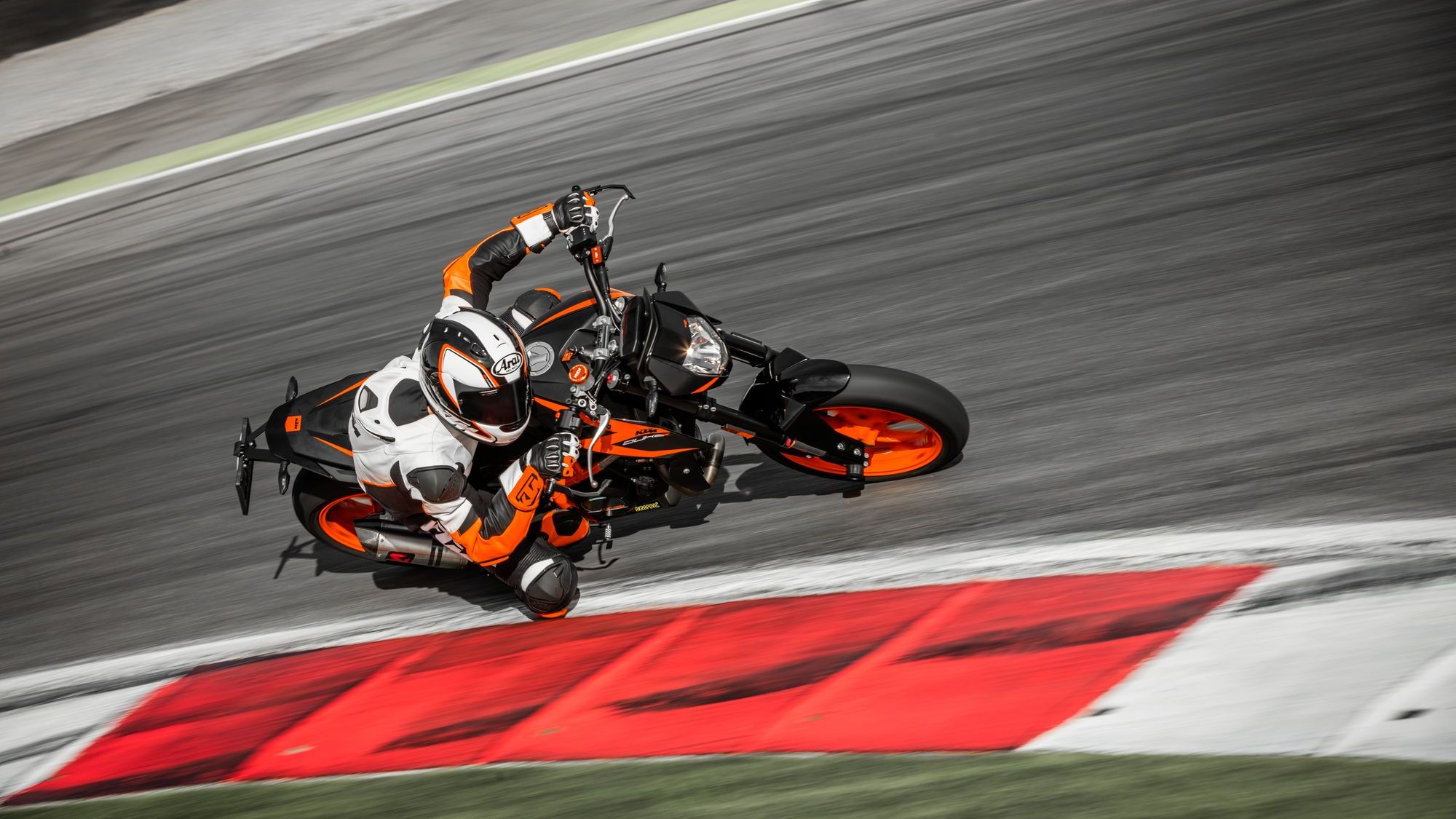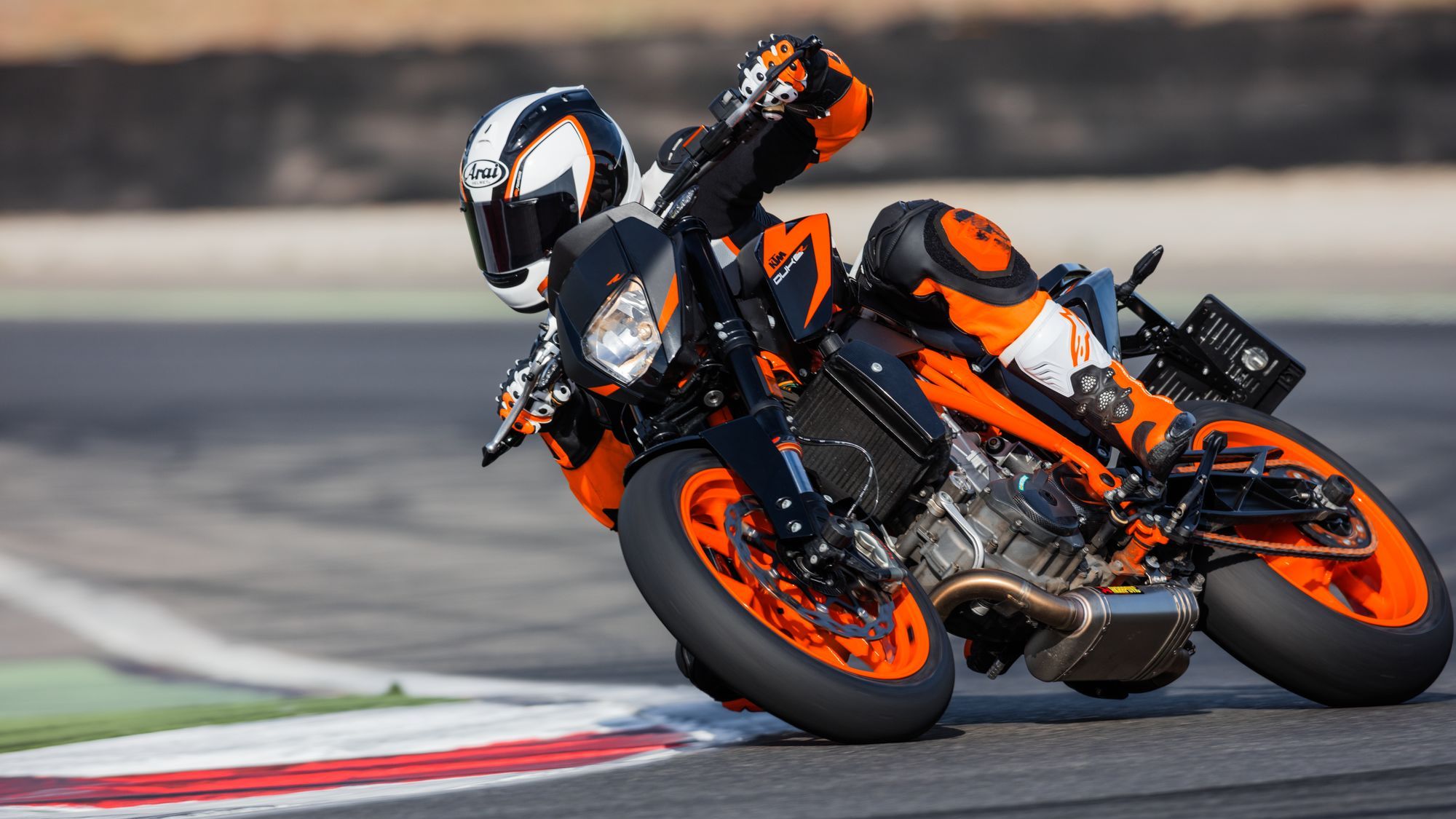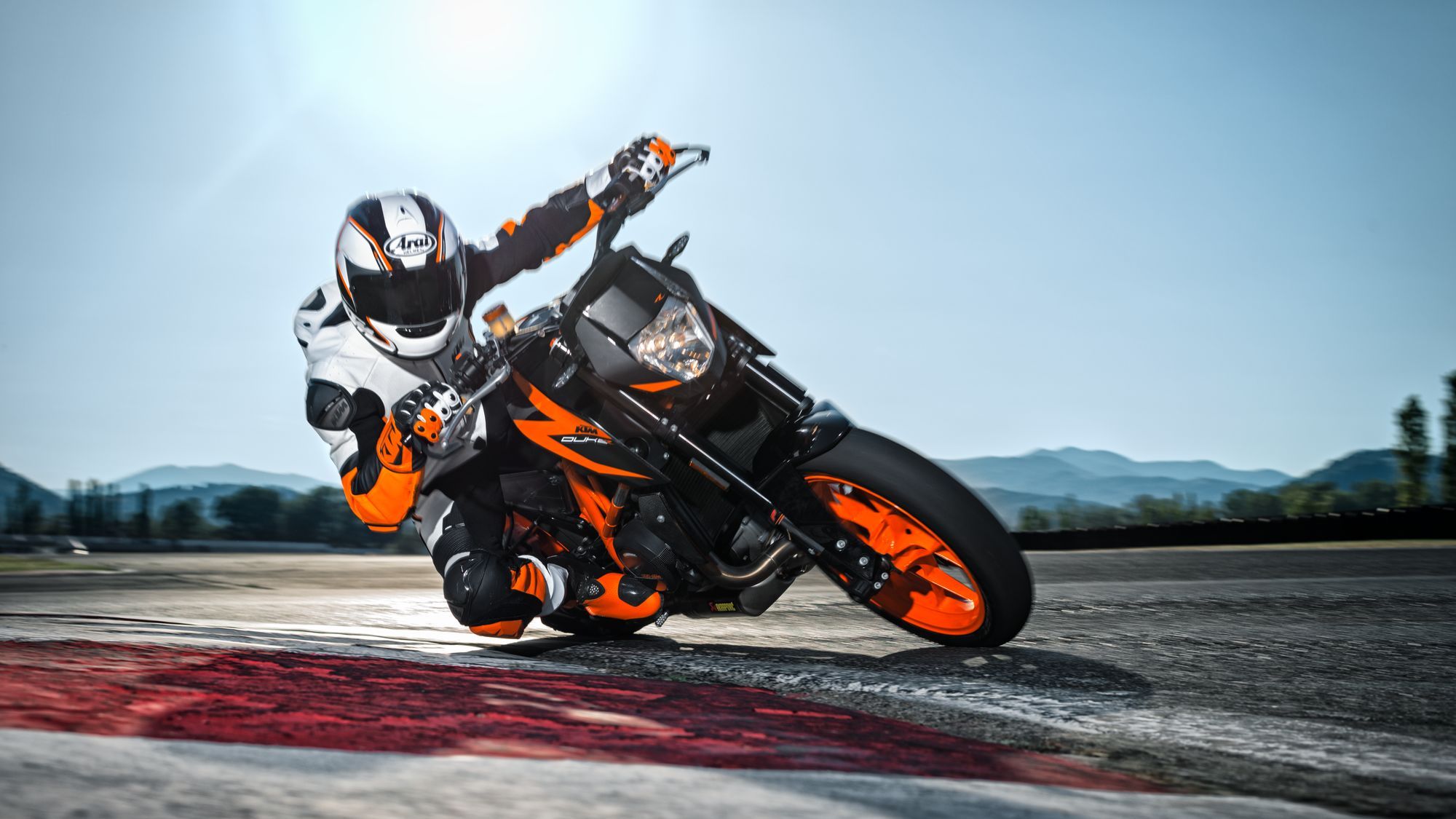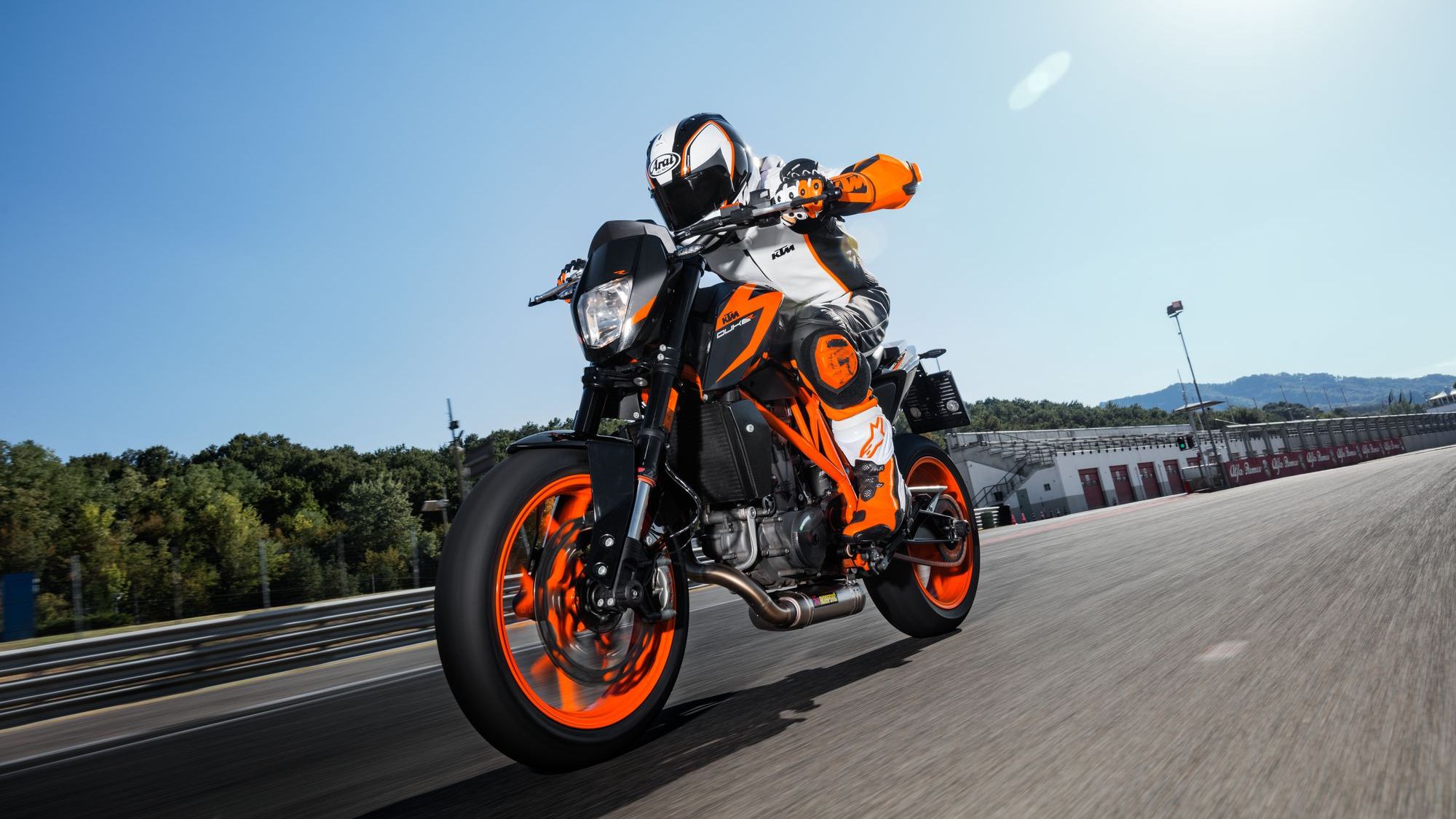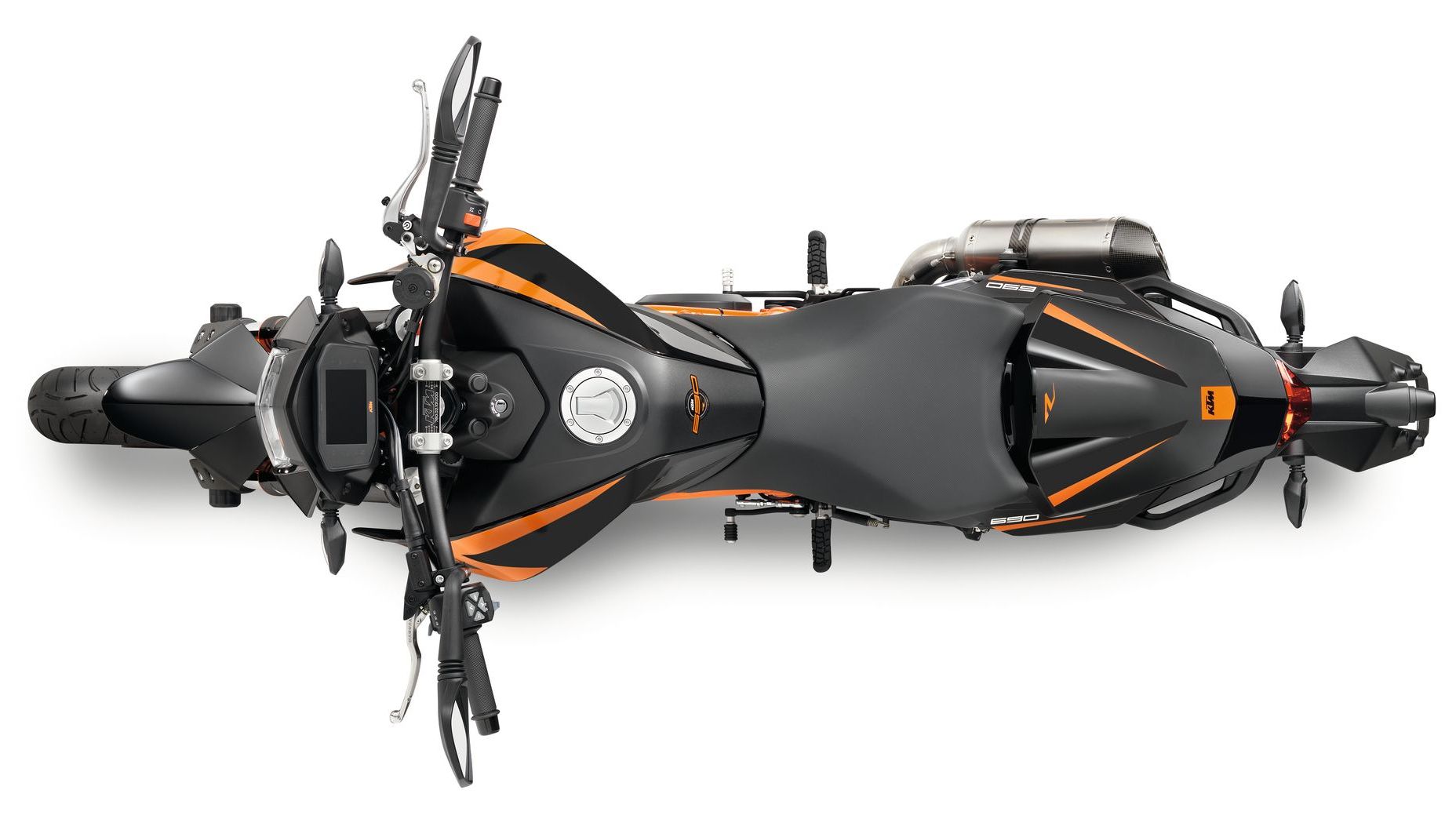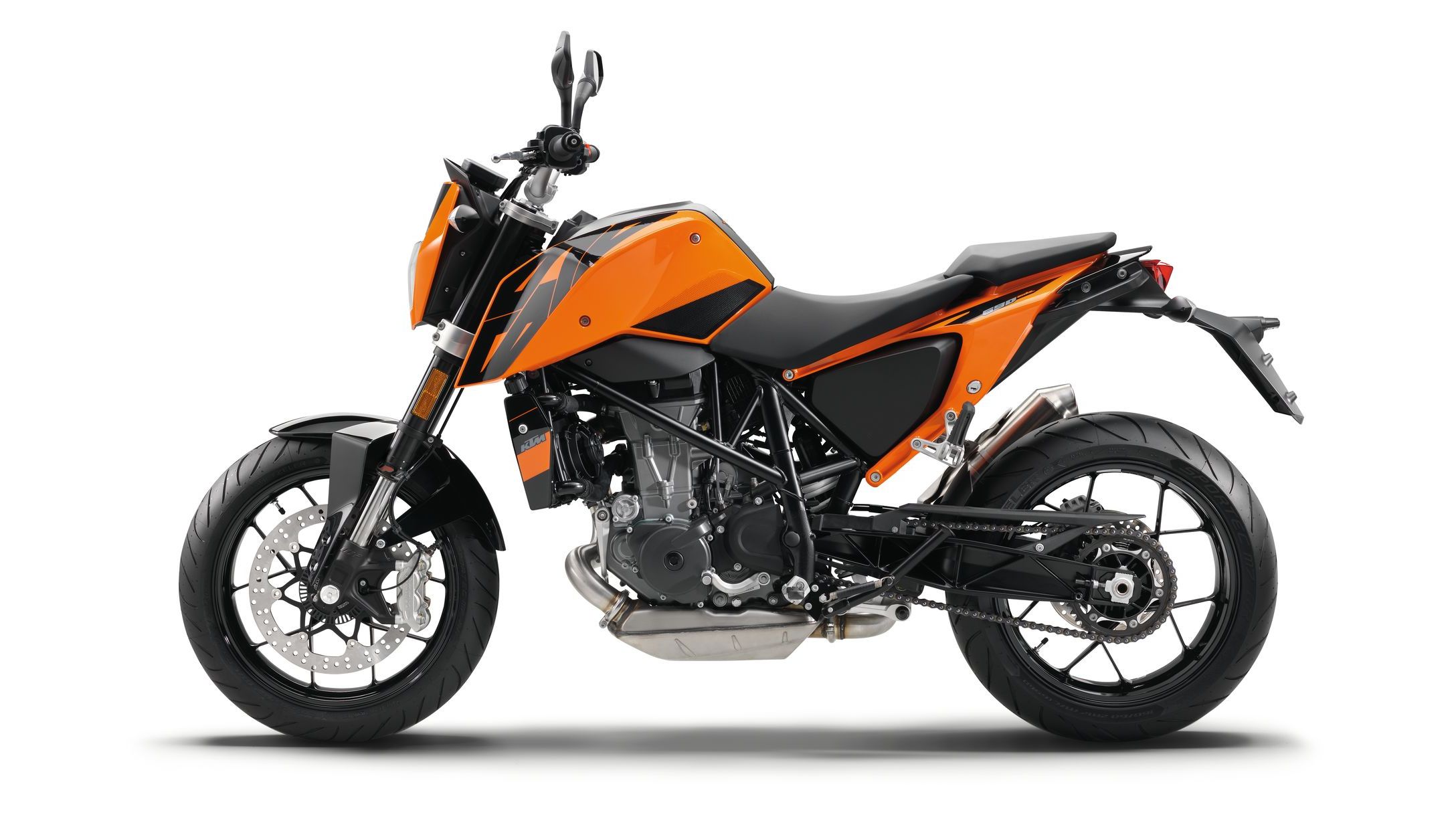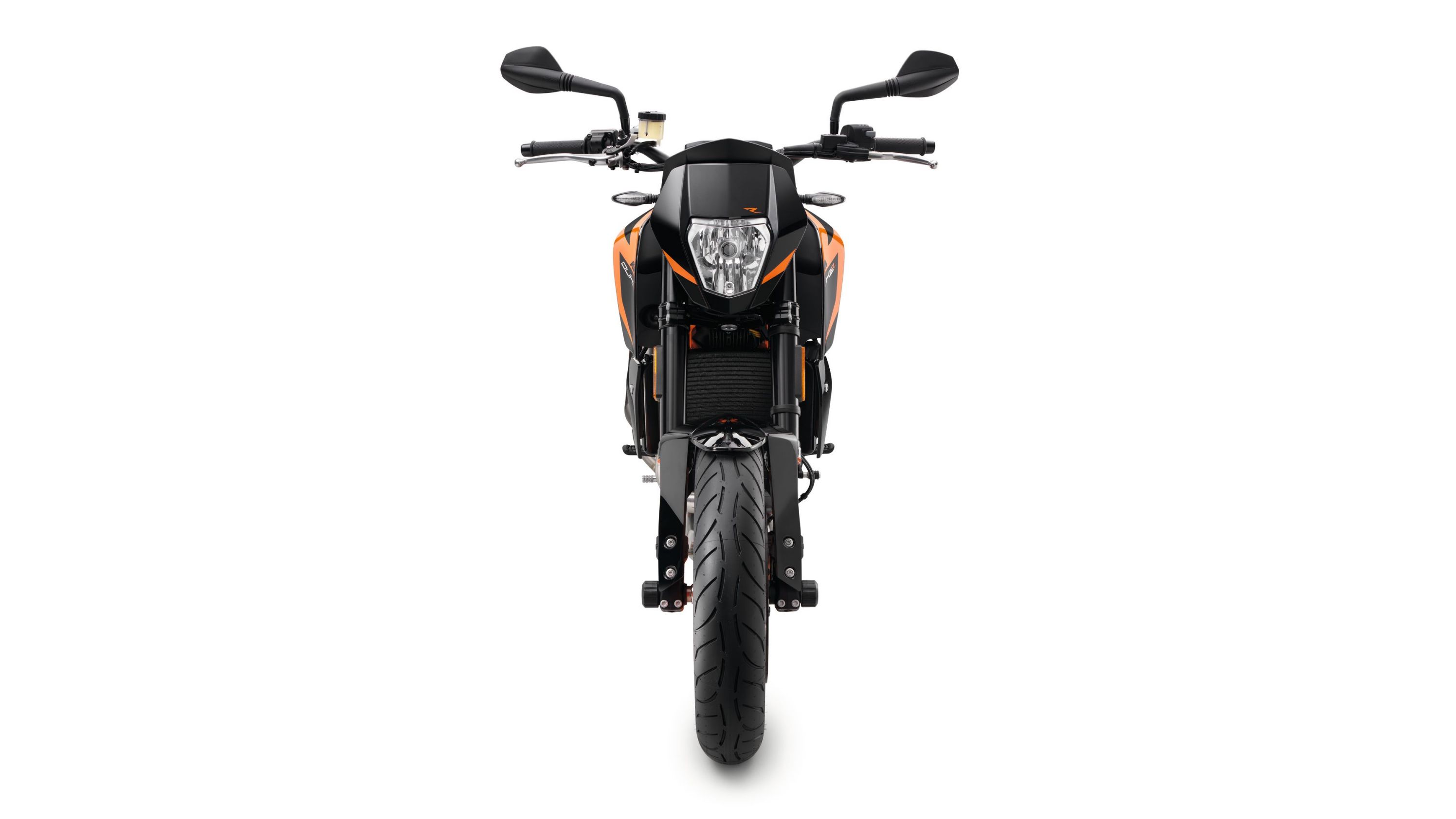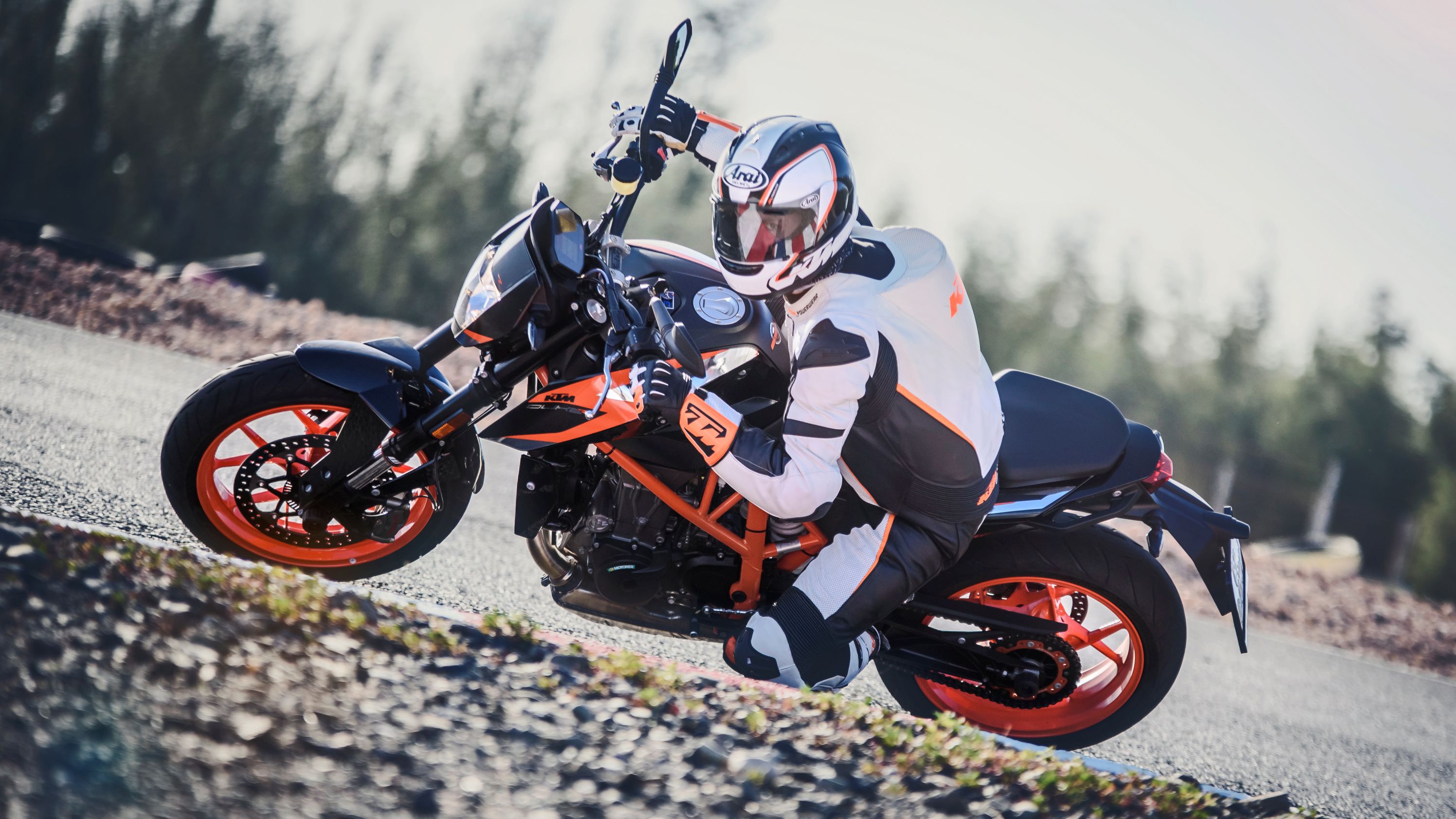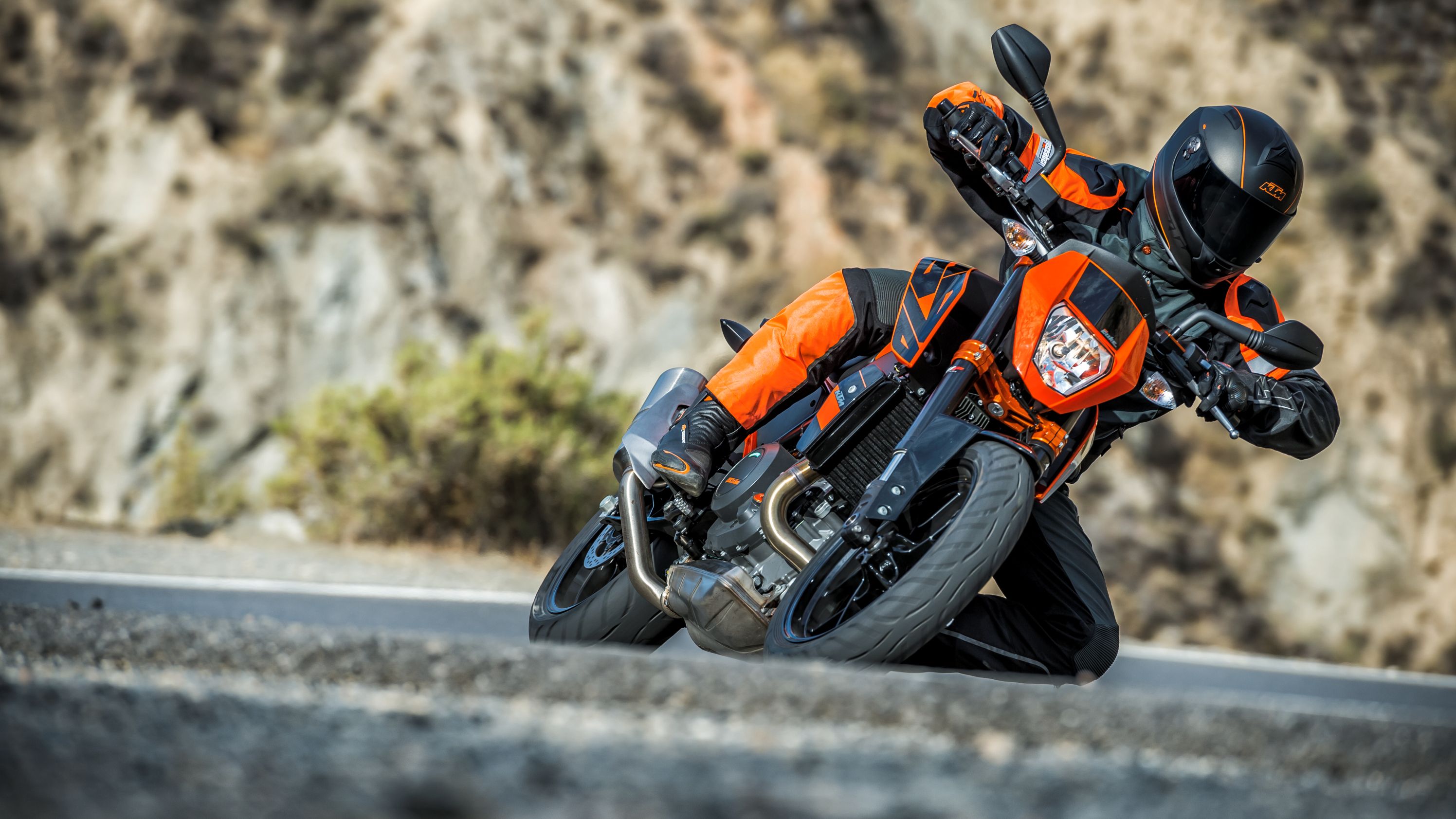Each version of the Duke since 1994 shed more and more of its vestigial 'dirt bike' features, and this latest version is a straight-up streetbike. This ride highlights the no-frills pragmatism of the designers with minimal body paneling, exposed frame and afterthought-class rear mudguard. The result is an unimpeded view of the wheels, frame and engine that leaves little to the imagination, and plenty of easy access for maintenance and repairs. Made since 2012, the Duke IV represents the current branch of the family tree, with the 690 Duke serving as the midrange-displacement sibling. Quick and light, the 690 Duke is intended for the entry-level streetbike market.
Continue reading for my review of the KTM 690 Duke.
2015 - 2017 KTM 690 DUKE ABS
- Make: Array
- Model: 2015 - 2017 KTM 690 DUKE ABS
- Engine/Motor: Single-cylinder, 4-stroke, spark-ignition engine, liquid-cooled
Design
Our Austrian buddies at KTM have been producing the Duke- model family for over two decades now. The original Duke, or Duke I (first of its name) was built as an off-road machine, and it evolved into the bare bike streetfighter that we know today.
On the go, the seat position feels high and unusually far forward, leaving with a feeling of being perched on the bike rather than seated in it, but the seat and pillion-pad covering has a comfortable and grippy texture that prevents the unwanted (and sometimes alarming) sliding around of your posterior during maneuvers. This is particularly nice given the tendency of the Duke to reward riders with a moonshot when they get a little twisty with the throttle.
Chassis
The chrome-molybdenum steel frame weighs in at an impossibly light 20 pounds, and the die-cast swingarm adds a mere nine pounds to it. In spite of this feather-light weight, the frame manages to deliver the requisite amount of torsional rigidity to keep the tracking stable and predictable. KTM used WP suspension products fore and aft.
The 43 mm inverted front forks may be a tad overkill for a bike this small and light, but they help carry the stiffness and stability of the frame all the way to the front tire. Nobody could ever accuse them of being the weak link to be sure. A pivot-arm articulated, pressurized-gas WP monoshock absorbs the forces on the swingarm, and it's tucked away out of sight leaving the tail end looking modern and clean.
Top-of-the-line Brembo brakes work with the 320 mm single front brake disc and 240 mm rear disc under the ever vigilant (unless switched off) Bosch 9M Plus, dual-channel ABS system. While I personally prefer to see dual brakes up front, the disc diameter and caliper are more than enough to control the bike. At least once I've seen the rear end kite unintentionally on rider when he grabbed a fistful of front brake at speed, so the lack of dual brakes is no problem at all with a sled this light.
Seat height is rather tall at 34 inches unladen, and while there is no doubt that it leaves you with a commanding view of your immediate surrounds in traffic, shorter riders will certainly be on their tippy-toes when stopped, but considering its off-road origins, the seat height is on par.
Drivetrain
KTM used the latest version of its 690 cc, LC4 engine for the mill. This liquid-cooled, single-cylinder engine cranks out an impressive 69.1 horsepower, but not much in the way of torque. You really have to wind it up to get usable power out of it, but that shouldn't be a surprise given the low rotating mass of this engine.
Part of this power is due to the high 12.6-to-1 compression ratio (yep, super unleaded country) and electronic fuel injection system, but that ain't all. The twin-ignition system controls the spark plugs through individual ignition mapping, and the ride-by-wire system controls the throttle through a combination of rider input and engine needs, both of which serve to make the power curve smooth and predictable.
One-lung engines are notorious for teeth-rattling vibration, but a balancer shaft geared to the crank mitigates much of the shake-rattle-and-roll to keep the vibration at a reasonable (read: tolerable) level. The six-speed transmission and chain drive send power to the rear hoop with an APTC clutch as the middleman between the chain and engine. This oil-bathed, hydraulically actuated clutch is what racers call a 'slipper' clutch, and it allows a certain amount of slip to prevent rear-wheel hop when downshifting and engine braking into a corner entry.
He Said:
“Too light for me by far! The low mass makes it really quick and responsive to the throttle (good) as well as crosswinds (not so good). Plus, it is even less suited for prolonged interstate speeds than my Sportster, which is a deal-breaker for me. Having said that, around town this bike is a hoot, and it will go around the world on three tablespoons of gas. That has to be worth something to a good number of potential buyers.”
She Said
My wife and fellow writer, Allyn Hinton, says, "As KTM's first street bike, you can still see the racing heritage in it -- very noticeable, for example, in the suspension travel. With a single, 690 cc cylinder, I was a bit skeptical -- okay, I might have snickered a little bit -- but shame on me. That 5,000 rpm in sixth gear will let you cruise at about 75 mph and it is fun on twisty roads. Overall, the gearing seems well-suited to daily commutes to campus or to work. It's just a tad too big for real fuel economy when looking at it as a commuter, especially with the 300-to-500 cc market having greatly expanded in recent years."
Specifications
|
Engine: |
|
|
Engine: |
Single-cylinder, four-stroke, spark-ignition engine, liquid-cooled |
|
Valves: |
OHC, Four valves controlled via rocker arm, chain drive |
|
Displacement: |
690 cc |
|
Bore: |
102 mm |
|
Stroke: |
84.5 mm |
|
Performance: |
69.1 horsepower |
|
Compression Ratio: |
12.6 to 1 |
|
Fuel Delivery: |
Electronic Fuel Injection |
|
Lubrication: |
Semi-dry sump lubrication system with two rotor pumps |
|
Ignition: |
Contactless controlled fully electronic ignition with digital ignition adjustment |
|
Cooling system: |
Liquid cooling system, continuous circulation of cooling liquid with water pump |
|
Starting aid: |
Electric starter, automatic decompressor |
|
Engine lubrication: |
Pressure lubrication with two Eaton pumps |
|
Transmission: |
Six-speed, claw shifted |
|
First Gear: |
14:35 |
|
Second Gear: |
16:28 |
|
Third Gear: |
21:28 |
|
Fourth Fear: |
21:23 |
|
Fifth Gear: |
23:22 |
|
Sixth Gear: |
23:20 |
|
Primary gear ratio: |
36:79 |
|
Secondary gear ratio: |
16:40 |
|
Clutch: |
APTC™ Anti-hopping clutch in oil bath / hydraulically operated |
|
Ignition system: |
Contactless, controlled, fully electronic ignition system with digital ignition timing adjustment |
|
Chassis: |
|
|
Frame: |
Tubular space frame made from chrome molybdenum steel, powder-coated |
|
Fork: |
43 mm, WP Suspension Up Side Down |
|
Shock absorber: |
WP Suspension with Pro Lever linkage |
|
Suspension travel front: |
5.31 inches |
|
Suspension travel rear: |
5.31 inches |
|
Brake system front: |
320 mm Disc brake with radially mounted four-piston brake caliper, floating brake disc |
|
Brake system rear: |
240 mm Disc brake with single-piston brake caliper, floating |
|
Tire, Front: |
Metzeler Sportec M7 RR 120/70 ZR 17 M/C 58W TL |
|
Tire, Rear: |
Metzeler Sportec M7 RR 160/60 ZR 17 M/C 69W TL |
|
Chain: |
5/8 x 1/4 inches X Ring |
|
Steering head angle: |
63.5 degrees |
|
Dimensions: |
|
|
Wheel base: |
57.7 inches ± 0.6 inches |
|
Ground clearance (unloaded): |
7.6 inches |
|
Seat height (unloaded):34 inches |
|
|
Total fuel tank capacity approx.: |
3.7 Gallons |
|
Fuel requirements: |
Unleaded premium fuel (95 RON) |
|
Weight without fuel approx.: |
330.7 pounds |
|
Maximum overall weight: |
772 Pounds |


